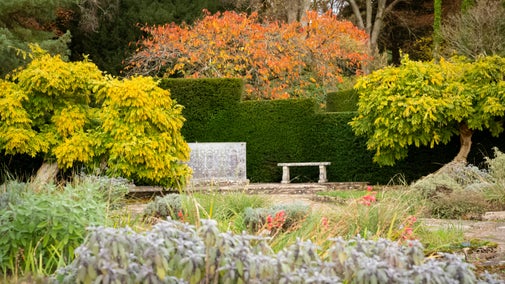
Discover more at Killerton
Find out when Killerton is open, how to get here, the things to see and do and more.
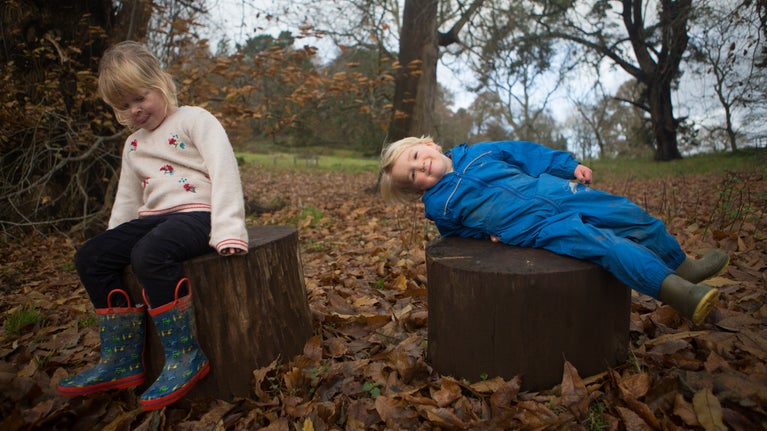
With far-reaching views, formal terraces, rolling lawns, ancient trees and even an extinct volcano, the different areas of the garden at Killerton are perfect for walks, escape and play. Whether you're visiting for a gentle stroll or to relax with the family, there’s room to explore at your own pace.
Head through the gate next to the house to explore the garden at Killerton. Opposite the old front door to the house is Admiral's Lawn, with a border of tender flowering perennials.
Stretching out behind the mansion house is the Terrace Garden. The herbaceous flowering bed is a canvas of colour in the summer and the four larger beds contain hazel and willow obelisks which support four different types of annual climbers.
Take a seat on the inscribed curved bench with expansive views over the front park. This was the place where former Prime Minister Lloyd George, made his speech to a huge crowd in 1925.
Neatly cut, sloping lawns and a variety of historic rhododendrons frame the more formal areas. Follow the path passing the large ornamental urns towards the larger lawn dotted with mature trees and magnolias.
The path weaves through areas dedicated to wildflower meadows. These wilder areas attract a wide variety of butterflies, bees and other pollinating insects.
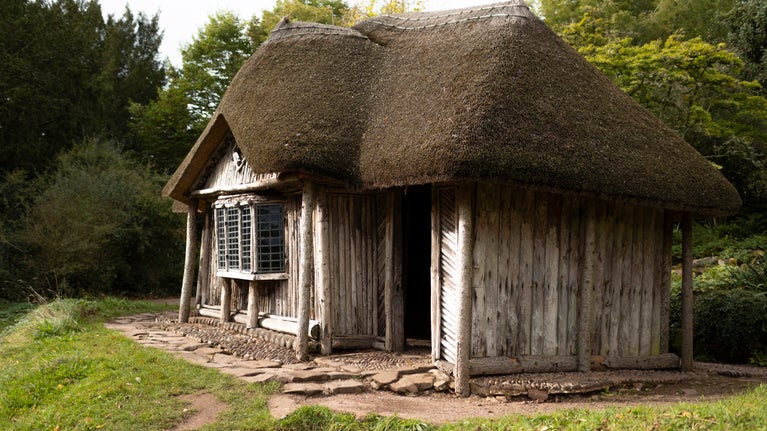
This small, thatched building was originally built as a summerhouse in 1808. It still stands today and its position offers an opportunity to stop and look back across the garden and parkland with glimpses of the house beyond. Correspondence describes Agnes Acland's recollections of playing in the garden with family and an uncle pretending to be a bear in the Lady Cott.
Step inside the hut to discover the deer knuckle bone floor, stained-glass window and ceiling alcoves decorated with pine cones.
The rock garden nestles at the rear of the Lady Cott. Rising rocky sides creates a climate for alpine plants and ferns, while a pathway of rocky steps leads up to the underground ice house. It can also be reached from the top path for easier access.
The ice house is an underground structure built to contain ice. It's built into the back of the quarry, lined with brick, and the exterior was clad in earth and stone to create a natural-looking feature.
During the winter of 1809, 30 men worked for five days to fill it with 40 tons of ice from nearby ponds and the River Culm. The ice was used to chill bottles and make chilled desserts like ice cream for the Acland family. A special dessert cooler was used to ensure the food did not come in direct contact with the ice.
The ice house has now become a winter roost for lesser horseshoe and greater horseshoe bats.
A pastoral delight - the Dairy was an exciting part of any visit to Killerton during the early nineteenth century. Lady Lydia used the building to impress visitors with her modern and practical knowledge of dairying, demonstrating how she crafted beautiful dairy products with her own hands. If you were a particularly favoured guest, you might have been invited to taste some butter, cream or even ice cream.
Today, the dairy houses a thoughtful new exhibition, A Climate for Change.
Climate change impacts us all. At the National Trust we have learned that conservation is about managing change. We are looking ahead, as well as back, to make decisions about how we care for Killerton. Step inside to discover the positive actions we are taking to help the garden, wildlife and people adapt to a changing climate.
Follow the main path from the rock garden and Lady Cott to the memorial for Sir Thomas Acland, 10th Baronet. The Grade II-listed memorial is in the form of a Celtic cross.
The cross was erected in 1873 to commemorate the 10th Baronet by 40 of his friends. It's clear to see why this was his favourite spot, looking out over the rolling Devon fields.

Take in the views on the winding paths to reach the lofty heights of the upper garden. Head through the gate to the shady woodland of the Clump – an extinct volcano and site of a Iron Age hillfort.
Local legend says a dragon lives at the very top and frequently flies between Killerton clump and nearby Cadbury hillfort.
Many specimen and champion trees follow the natural contours of the garden. The seeds for these rare trees were collected by local plant collectors working for the Veitch nursery in nearby Exeter.
An avenue of beech trees leads to a giant sequoia redwood tree. Descend further to pass the handkerchief tree (Davidia involucrata) which grows near the top of the smaller sloping lawn.
The name derives from the pale leaves which drape in a way that resembles handkerchiefs.
The grounds of the chapel are a quiet place to reflect and take in tranquil birdsong, while admiring the architecture of this Grade I-listed building.
In 1968 Lady Anne Acland planted two cyclamen plants under the tulip trees in the chapel grounds at Killerton. Over the years the cyclamen have flourished and now in the spring, this area is carpeted with hundreds of thousands of vivid pink cyclamen flowers.
The chapel was designed by architect C R Cockerell by Sir Thomas Dyke Acland, 7th Baronet, in the 1840s. Acland wanted a family chapel of his very own and, as agreed, Cockerell copied the Lady Chapel and Crypt of St Joseph of Arimathea at Glastonbury.
The interior of the chapel is unusual, as the pews face each other rather than the altar. This means the congregation could all see each other, from the Aclands and their guests to their servants and estate workers.

Find out when Killerton is open, how to get here, the things to see and do and more.
Stop by the Stables Coffee Shop for some refreshments, before browsing for gifts and souvenirs in the National Trust shop or second-hand bookshop.
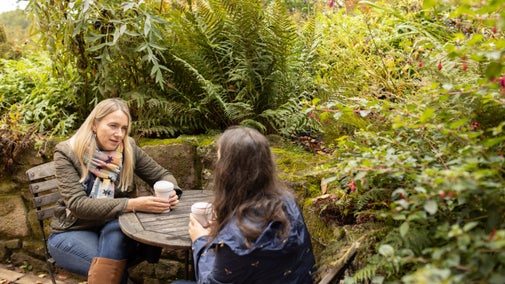
Killerton is a two pawprint rated place. With miles of paths and tracks to explore, dogs love walkies at Killerton. Find out the best dog-friendly walking routes and where they can run off the lead.
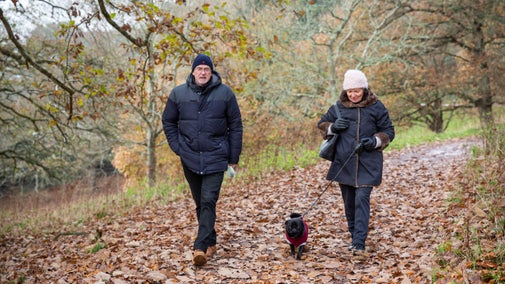
Step inside and explore the country house residence of Sir Francis Acland, 14th Baronet, home of the Acland family from the late 17th century. The house is open daily.

Explore the forests, orchards and parkland on the vast estate at Killerton and discover the creatures that live here, from Highland cows and dormice to bats and butterflies.

Killerton’s estate is an important wildlife haven, but is threatened by climate change. Thanks to the Green Recovery Challenge Fund, projects have been completed to protect its grounds.
From 18th-century water gardens and Arts and Crafts landscapes to intimate woodland gardens, there are so many places to discover.

Discover our gardeners’ top tips so you can make the most of your garden, plot or window box.
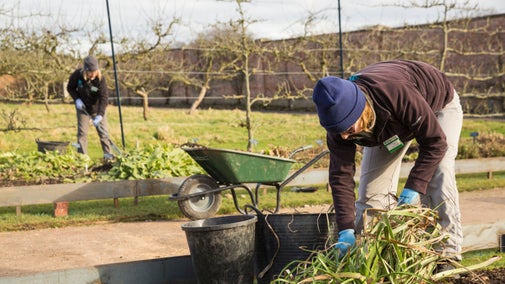
Take a stroll and explore the wide variety of the gardens we look after in Devon.
